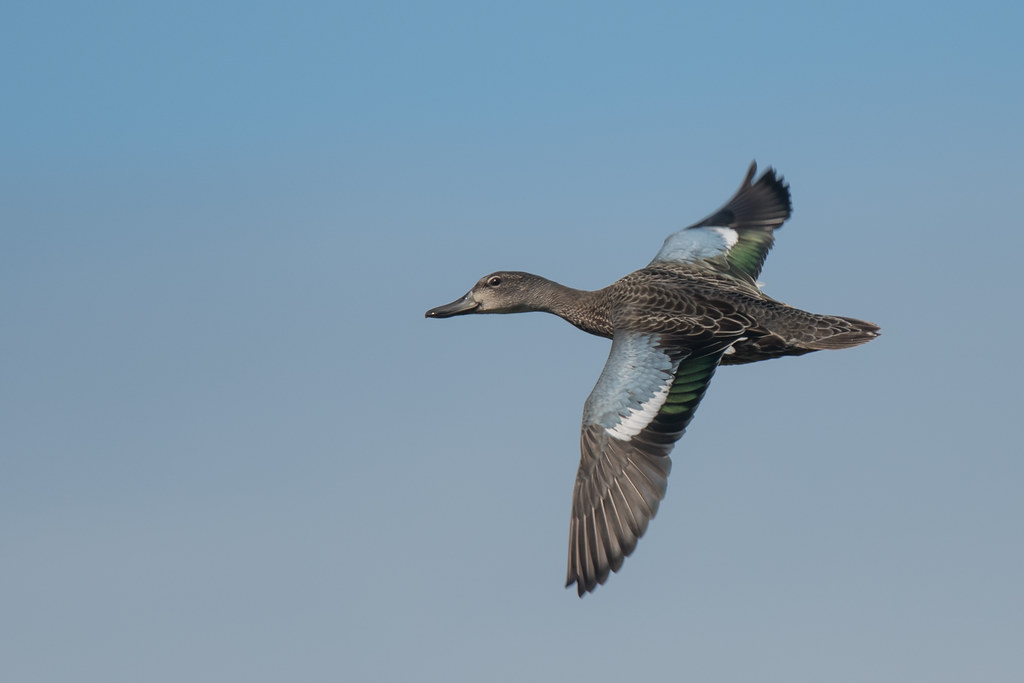
Tim writes: I’ve long wanted to photograph a Blue-winged Teal in flight showing its trademark blue wings. But you can see that the speculum (the shiny panel at the back of a duck’s wing) is green. Ironically it is the green speculum that gives rise to the name in Green-winged Teal, yet both species share this feature. But where this Blue-winged Teal has a sky-blue forewing, Green-winged Teal is just grey. You can also see another diagnostic feature of Blue-winged; a pale patch between the eye and the bill.
This is a male Blue-winged Teal in eclipse plumage. Ducks moult all their flight feathers simultaneously so they are flightless for a while. Before they shed their flight feathers, males have a head and body moult to lose their conspicuous breeding plumage to become more female-like. This plumage is known as eclipse plumage. It was closely associating with a female which was similar, but lacked the iridescent green speculum and the white wedge that separates it from the blue forewing.
Blue-winged Teal breeds across much of North America and winters in the southern States, Central America and the Caribbean. I photographed this one in coastal British Columbia at the Reifel Reserve. Its scientific name is Spatula discors. Spatula is a recently constructed genus that includes Shovelers and some Teals (though not Green-winged). Spatula describes the broad spoon-shaped bill while discors means different. Though Catesby’s original description (1731) didn’t say what was different about it. Though he did call it the White-faced Teal so presumably it was the face of the breeding plumaged male that caught his eye.
[registration_form]